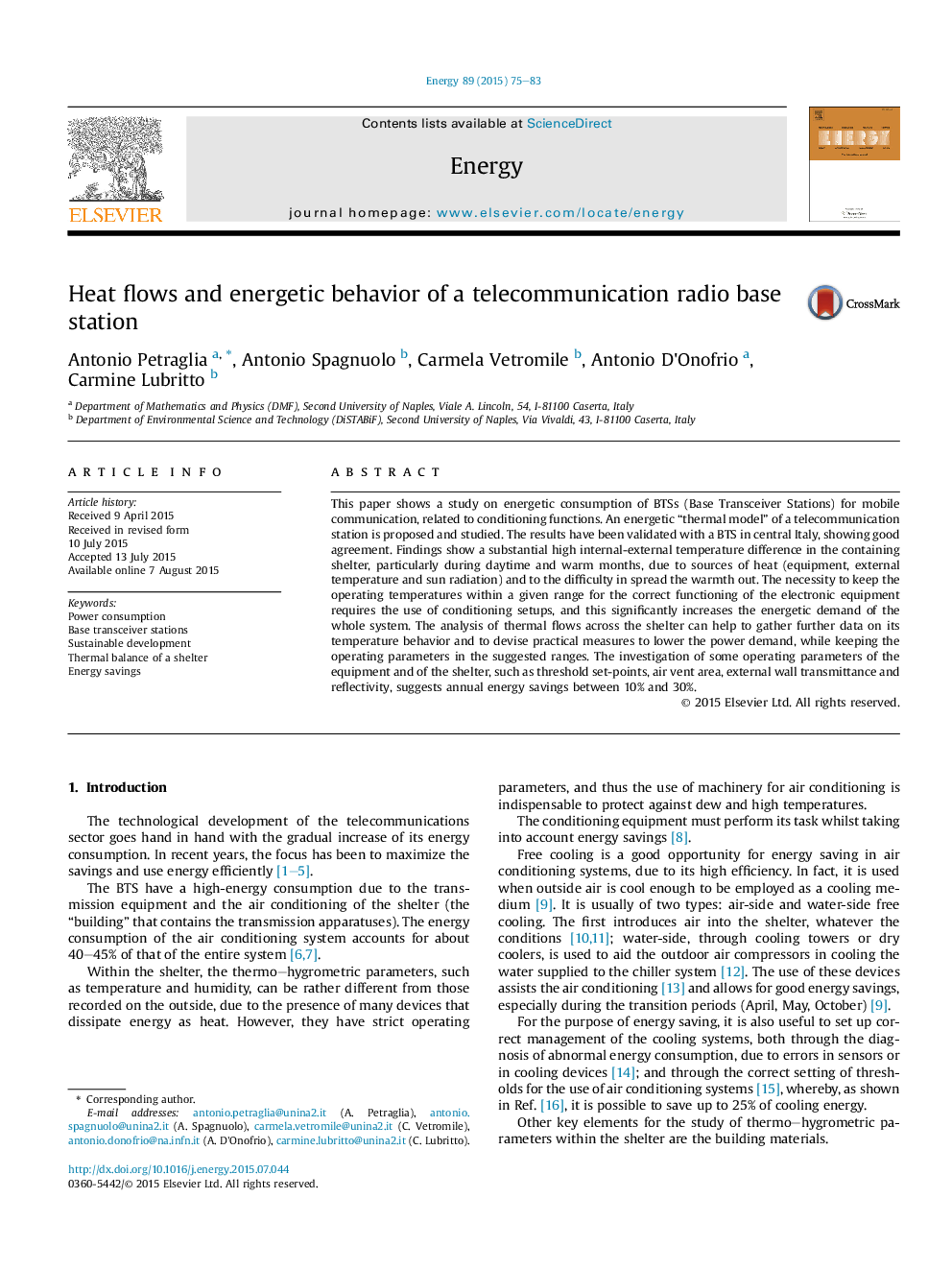| کد مقاله | کد نشریه | سال انتشار | مقاله انگلیسی | نسخه تمام متن |
|---|---|---|---|---|
| 1731887 | 1521457 | 2015 | 9 صفحه PDF | دانلود رایگان |
• A heat flow model for a telecommunication shelter was created.
• Successful matching of the model and real-life cases was obtained.
• The model addresses how each parameter affects energy consumption.
• Reasonably savings of up to 30% of consumed energy can be expected.
This paper shows a study on energetic consumption of BTSs (Base Transceiver Stations) for mobile communication, related to conditioning functions. An energetic “thermal model” of a telecommunication station is proposed and studied. The results have been validated with a BTS in central Italy, showing good agreement. Findings show a substantial high internal-external temperature difference in the containing shelter, particularly during daytime and warm months, due to sources of heat (equipment, external temperature and sun radiation) and to the difficulty in spread the warmth out. The necessity to keep the operating temperatures within a given range for the correct functioning of the electronic equipment requires the use of conditioning setups, and this significantly increases the energetic demand of the whole system. The analysis of thermal flows across the shelter can help to gather further data on its temperature behavior and to devise practical measures to lower the power demand, while keeping the operating parameters in the suggested ranges. The investigation of some operating parameters of the equipment and of the shelter, such as threshold set-points, air vent area, external wall transmittance and reflectivity, suggests annual energy savings between 10% and 30%.
Journal: Energy - Volume 89, September 2015, Pages 75–83
